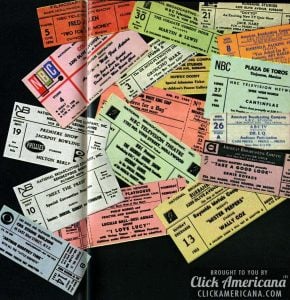Interest centers in two new compounds that have remarkable quieting effect; Longer wait, however, believed necessary
By Albert W Bloom, Text from the Pittsburgh Post Gazette (Pennsylvania) April 22, 1955
The era of “pills for mental ills” isn’t with us yet, and, by the nature of things, may never be.
This is the sum-up of impressions from some key district psychiatrists on the new drug “tranquilizers” being greeted with bursts of enthusiasm in research centers and crowded mental hospitals alike.

Interest revolves around two types of compounds:
1. Chlorpromazine, a man-made drug discovered in France during antihistamine research in 1950. It’s manufactured under the trade name Thorazine.
2. Reserpine, based on extract of juices from snakeroot, and used for centuries in India. The shrub source is technically called “Rauwolfia serpentina.” Modern drugs from it were developed about two years ago, and are now marketed by more than 15 firms under varied trade names.
Quiet excited patients
Both drugs have a remarkable ability to quiet highly excited mental patients, enabling them to cooperate and accept psychiatric treatment.
“They are the best of the new drugs. They certainly offer hope, but I am afraid of false hope,” one expert researcher at Western Psychiatric Institute and Clinic declared.
“We don’t know whether this is the thing we’re looking for. It’s an empirical (trial and error) procedure, but we’ve done nothing to reverse the process (of mental illness) because we don’t know what the basic disorder is.
“We’ll have to wait at least five years to find out how effective these drugs really are.”

Person always involved
Another doctor pointed out: “You’re not dealing with a drug alone — there’s always a person involved with it.”
A psychiatrist close enough to observe the all-over effects of such drugs said, “When you have a drug capable of such powerful, sweeping effects on the emotions to the extent that these do, must we not be cautious over a period of years to see what it does to us the body?”
There may be a “physiological price” to the body while affecting the emotions. Only time will tell.
More than 50 selected cases are being treated with the drugs at Psychiatric, starting last June.

300 treated with new compounds
At the Veterans Neuropsychiatric Hospital, Leech Farm Road, East Liberty [Pennsylvania], nearly 300 patients have been treated with the new preparation.
“We feel they have been of considerable help,” said Dr. Stewart T. Ginsburg, hospital manager. “They have a tranquilizing effect. Patients who are aggressive become more tranquil. Those that are apathetic become more interested in their surroundings. Thus the drugs help a patient to the point where we can reach him with psychotherapy and activity therapy,” he explained.
At St. Francis General Hospital in Bloomfield, more than 500 patients have been given doses of the new compounds. The considered opinion there: “Excellent drugs, but have to be used carefully. The patient has to be followed closely. Thorazine is a drug that can’t be used on every patient.”

Don’t rank with penicillin
None of the doctors discussing the impact of the drugs here believe they rank with penicillin and other antibiotics as medical discoveries, nor with such preventive measures as the use of vaccines.
They discount as a “synthetic feud” published reports that cool “ivory tower” doctors in research institutions differ with enthusiastic “red brick” mental hospital staff men on the effectiveness of the “peace of mind drugs.”
Actually, emphasis, rather than opinion, differs. “Are you going to treat symptoms or find causes?” one top research scientist said. “Anything that alleviates symptoms is the best thing that can happen now. But the investigator must keep his eye on the ball — causation.”
The job of the “ivory tower researcher is to learn the mechanism of mental illness. leading to prevention. So how could there be a feud with those who treat mental cases?” he said.
With prevention the aim, he commented with grim humor: “Everybody can’t take chlorpromazine from childhood.”

Estimate on afflicted
This underlines the estimate that more than five percent of the population in the United States is afflicted with mental or emotional illness. In 1954, some 2,500,000 people were treated for some form of mental illness in hospitals, clinics or private practice, says the National Association for Mental Health.
Another 5,000,000 patients admitted to general hospitals for treatment of physical ailments or injuries were found to be suffering from some form of mental disturbance. Treatment of mental illness costs the American taxpayer more than one billion dollars a year.

Have to be watched
The new “peace of mind drugs” bring their own problems. in addition to “side effects” which are tricky and have to be watched.
“Assume you have 1,000 schizophrenics (mental illness sometimes described as ‘split personality’) who are treated with these drugs, making them amenable to psychotherapy,” our pioneer in psychiatry said, then added: “Where would you get the psychotherapists to treat them?”
The new drugs are useful, but can’t be expected to replace completely electric shock treatments and insulin shock therapy, doctors here conclude.
Meanwhile, the “peace of mind drugs” have been found useful in other ways. They’ve been used in treating: Alcoholism, drug intoxication and “withdrawal problems” when the addict is kept away from dope, bronchial asthma, delirium tremens, epilepsy, hiccups, high blood pressure, blood circulation diseases, Parkinson’s disease, itching, seasickness, tension.



















